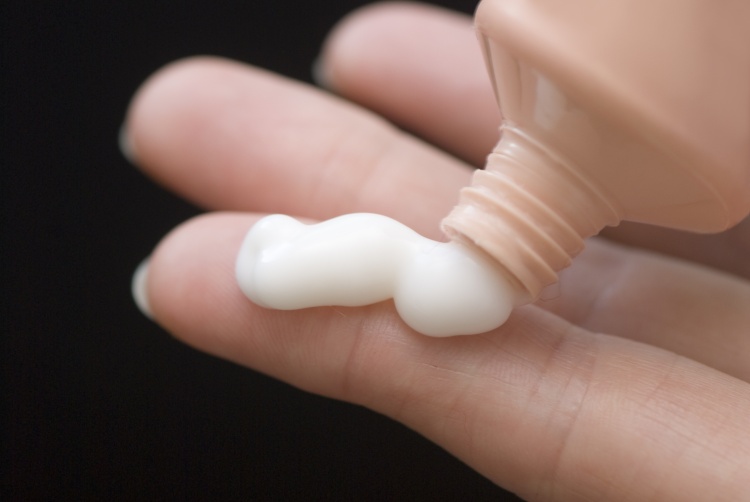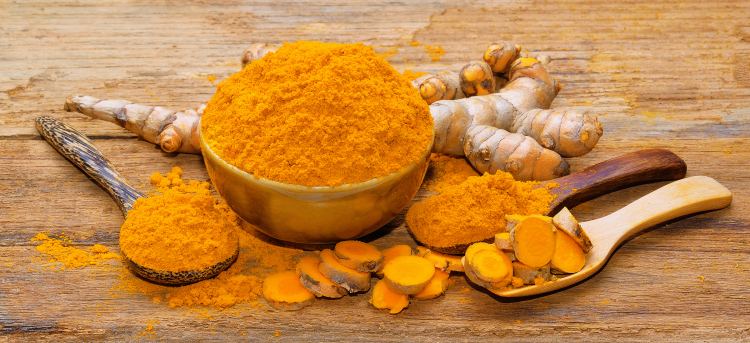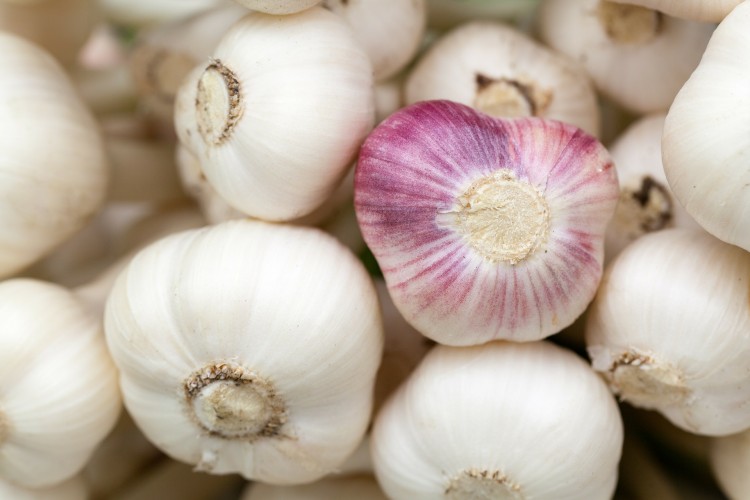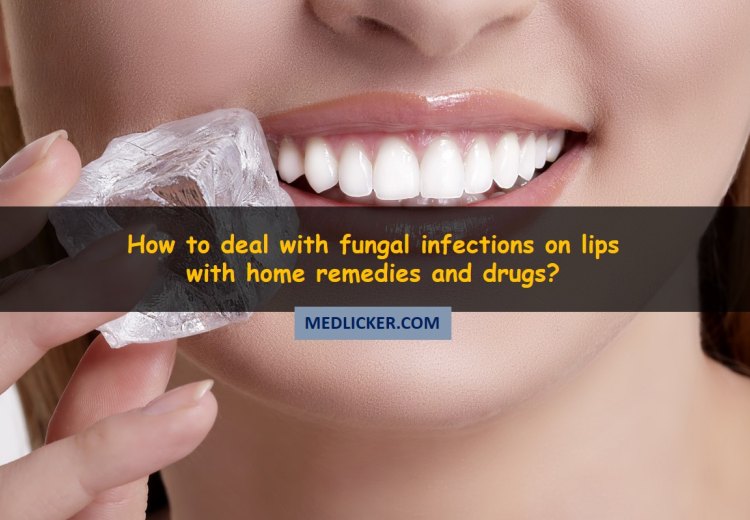How to cure fungal infections on your lips with medicines and home remedies?
Fungal infections may be a real nuisance. They are very difficult to treat and they frequently re-appear. In this post we shall take a detailed look at medical and home treatment options for fungus on the lips.
Lips are two folds of tissue that surround your mouth. They are center-point to the beauty of your face. They are ever sensitive to warm, cold and tactile sensations. Lips are one of the most prominent features on our face. So if there is a sore or ulcer on your lip, it may make you uncomfortable and self-conscious. Fungal infections of the lip can be an irritating problem. Along with being painful lip infections are also unsightly.
The infections on the lips usually arise from problems inside the mouth. Your lips provide a warm and moist environment for the growth of microorganism. Usually the native or the good bacteria and the immune system of the body prevent the growth of harmful bacteria. But sometimes, either due to suppressed immune system or outside factors, harmful bacteria grow and cause infections.
Candidiasis is the most common type of fungal infection on the lips (1). The causative agent of candidiasis is Candida Albicans. Normally, the immune system of your body prevents the growth of fungus. But if an imbalance occurs, it can lead to the infection of your skin, including your lips. The moist environment is best suitable for fungal growth. The infections usually start from within the mouth and spread to the lips (2). If this is left untreated it can spread to the esophagus (food tube) (3).
The infection on the corners of the lips is called angular chelitis (4). This can occur due to bacterial or fungal infections. They are irritating and hinder the opening of the mouth and thus making every day functions very difficult. Angular chelitis causes scaling and fissure formation at the angle of lips. This can be precipitated by cold weather and vitamin B12 deficiency.
Symptoms of fungal infection
The symptoms of fungal infections can range from mild irritation to extremely painful ulcers. The pain due to fungal infection of the lips is usually mild. You may not even suffer from all the below mentioned symptoms. However you should be concerned and pay a visit to your doctor (dermatologist or GP) if you have more than 2 of the following symptoms:
- Lip pain
- Irritation of the lips
- Sore formation on the lips
- Formation of white patches on the lips
- Formations of fissures on the corners of lips
- Scaling of the skin around the lips
- Redness of the lips and surrounding skin
- Itching sensation.
Causes of fungal infections on the lips
The most common causative organism of lip fungus is Candida Albicans. There are certain factors that make it easier for the fungi to grow. Candidiasis is an opportunistic infection, meaning it grows only when the conditions are right for it. Provided below are a few factors that facilitate the growth of fungi (5).
- Immune-compromise: A person that has a faulty immune system cannot fight off harmful microorganism. Candidiasis is an opportunist infection that attacks when it sees an opening. The immune cells in immune-compromised are so depleted or damaged that they cannot defend the body and therefore give way to fungal infections.
- Dry mouth: Both the quality and quantity of saliva play an important role in preventing fungal infections. There are certain good bacteria and antigens in the saliva that kill the fungi. Also, the saliva helps wash away the fungi before they can cause infection. If the amount of saliva reduces, it can lead to accumulation of fungi. Moreover, if the composition of saliva alters, it can result in decease in immunity.
- Denture wearing: Denture wearing can lead to poor or improper oral hygiene. The denture covers the mucosa and prevents the proper supply of oxygen and saliva to it. The denture itself provides an acidic, moist and anaerobic environment for the fungal growth.
- Diet: Malnutrition and malabsorption are predisposing factors for fungal infections of the lips. The deficiency of vitamin B 12 and folic acid is especially significant. This leads to a diminished immune response and altered integrity of epithelial cells.
- Smoking: Smoking can cause local hypoxia. This means that when you smoke the blood and oxygen supply to the tissue of the lips decrease. Thus providing ample opportunity for fungi to grow.
- Diabetes: Poorly controlled diabetes can also lead to fungal infections. This occurs due to two factors. First is the diminished host response. The second is the high blood sugar levels. Because the high sugar levels are breeding grounds for fungi.
- Steroid use: Use of anabolic steroids is illegal in many countries unless prescribed by a doctor. Anabolic steroids are used to enhance muscle production. Corticosteroids are helpful as an anti-inflammatory medication. They also have an effect on the body’s immune response, stress response and metabolism. Steroid use causes an increase incidence and risk of yeast fungal infection. Steroids cause an increase in blood sugar levels. Thus providing favorable growth environment for the fungi.
- Makeup: Wearing too much makeup can alter the pH of your lips and skin. This makes them more susceptible to fungal infections. Applying makeup that is expired or of low quality is not good for your lips. Using makeup that’s been left in the sun for days is also a predisposing factor for fungal infections. Because the direct sunlight can alter the composition of makeup.
How to diagnose fungal infections of the lips
The doctors usually diagnose fungal infections on basis of clinical appearance and history. There are a few blood tests that can be done to check for the cause or potential cause of fungal infections. This may include blood tests like vitamin B 12 and folate levels.
If the fungal infections dose not respond to conventional treatment then a biopsy maybe done. This helps pin point the cause and making it possible to devise a targeted treatment plan.
How to treat fungal infections on the lips
There are many antifungal drugs available in the market these days. These drugs can help fight fungal infections.
On the other hand there are also home (natural) remedies for treatment of fungal infections. They have less side effects and are sometimes more effective than antimycotic drugs.
While home remedies may sometimes be a good option to cure your lip fungus we strongly advice you to go and see your doctor and ask him/her about proper treatment of fungal infection.
Here is an overview of medical and natural treatment options for fungus on lips.
Medical treatment
The medical treatment for fungal infections is antifungal drugs. There is a wide range of antifungal drugs available in the market. The drugs are available in form of topic creams, lozenges and pills. The type of antifungal used depends of the severity and site of the infection. In this section we are going to talk about a few drugs to cure or at least control fungal infections (6, 7, 8).
Mycostatin (nystatin)
It is an antifungal drug. Topical mycostatin is used to treat local fungal infections (9).

The topical application is available in form of powder, cream and ointment.
Mechanism of action
Mycostatin is an antifungal cream that acts by weakening the cell membrane of fungi. It causes the rupture of the cell membrane of the fungus. This leads to leaking out of cellular material. Thus resulting in the death of fungus.
How to use
Use mycostatin as directed by your physician or pharmacist. Here are some general rules on how to use it:
- Clean the affected area with soap and dry it completely.
- Clean your hands. Take a little cream on your hands.
- Apply it on your lips and cover the whole affected area.
- Rub gently.
- It works best if applied at same time every day.
Dosage
Apply the cream liberally on the affected area. Use twice daily or as indicated by your doctor till infection clears up.
Side effects
There are relatively few side effects of topically applied drugs. The area of exposure to drug is limited. And little to no drug enters the blood vessels.
These are two main side effects of mycostatin cream:
- Skin irritation
- Allergic reaction
Clotrimazole
It is an antifungal drug. It is available in the form of topical applications and pills (10). For local fungal infection of lips, topical clotrimazole is the preferred preparation. It is a broad spectrum antifungal. It is odorless and insoluble in water. When applying to the lips, make sure to avoid accidental ingestion.
Mechanism of action
Clotrimazole acts by altering the permeability of the cell membrane of fungi. It inhibits the synthesis of ergosterol that is essential for cell membrane formation. Thus killing the fungi due to the leakage of cellular content.
How to use
Use clotrimazole as directed by your doctor. These are just some general instruction on how to use it:
- Clean the affected skin.
- Apply clotrimazole cream and gently rub.
- Wash your hands after application.
- Do not ingest or use the cream in the mouth.
- Use the cream twice a day.
- For best results use at same time every day.
Side effects and precautions
Every drug has varying degree of side effects. Topical creams have fewer side effects because they do not enter the blood stream. So along with the effects, the side effects are also localized.
These are the common side effects associated with use of clotrimazole cream:
- Burning of skin
- Irritation
- Redness
- Allergic reaction
- Flaking of skin
Fluconazole
Fluconazole (Diflucan) is an antifungal that belongs to the azole group of drugs (11).
This is a potent antifungal and mostly available in pill form. Fluconazole is advised for persistent fungal infection of the lips. Consult your doctor before taking oral antifungals like fluconazole.
Mechanism of action
Fluconazole kills fungi by hindering the formation of their cell membrane.
How to use
Use fluconazole as instructed by your doctor. These are some general instructions on how to use it:
- You can take fluconazole with or without food.
- Follow the full course of fluconazole even if you feel better.
- Do not miss any dose otherwise it will not be fully effective.
- Take the drug at the same time every day.
Dosage
Fluconazole is available in form of 50, 100, 150 and 200 mg capsules. The dose is determined by your doctor.
Side effects and precautions
Like every drug fluconazole along with its benefits also has a few side effects. Given below are a few common side effects of using fluconazole:
- Change in taste
- Allergic reaction
- Dizziness
- Headache
- Mild stomach upset
The following people should use fluconazole with caution:
- Pregnant women
- Breast-feeding women
- People with liver or kidney disease
- People with compromised immune system
Hydrocortisone
Hydrocortisone is a mild steroid. It can be used along with antifungal creams (12). Hydrocortisone helps with the faster healing of the skin. It helps clear up the rashes that form due to fungal infections. It helps reduce itching and redness.
Mechanism of action
It acts an as anti-inflammatory agent. It helps reduce swelling and in turn reducing irritation and pain.
How to use
Use hydrocortisone as instructed by your doctor.
Side effects and precautions
Following are the common side effects of hydrocortisone:
- Allergic reaction
- Dryness of skin
- Skin discoloration
- Irritation of skin
The following people should use hydrocortisone with caution:
- People who are allergic to other steroids
- People with sensitive skin
- People with infections like (measles and chicken pox)
Natural remedies
Fungal infections of the lip can be can be painful and debilitating. There are many drugs that can help fight fungal infections. But they all have various side effects. Natural remedies have little to no side effects. Some of these remedies have been used for centuries. Home remedies have shown to be effective.
In this section we are going to discuss a few home remedies for fungal infections.
While home remedies may sometimes work even better than anti fungal drugs you should only use them with prior consent of your doctor. Never attempt to self treat and always ask your doctor for advice before taking any home remedy.
Coconut oil
Coconut oil is a great remedy for irritating and itchy fungal infections (13, 14). Coconut oil has antifungal activity and it also helps reduce the irritation and inflammation associated with fungal infections. Caprylic acid is an active ingredient in coconut oil. This cause the breakdown of cell membrane of the fungi. Thus preventing proliferation of fungi.
It has been proven through many experiments that coconut oil damages the nucleus of yeast. This leads to their death. Lauric acid in coconut helps boost the immune system. Coconut oil forms a protective layer when applied to lips. This helps faster healing of the lips and surrounding skin.
Here is how to use coconut oil for treatment of lip fungus:
- Gently clean your lips.
- Apply a little virgin coconut oil on a cotton swab.
- Apply it on lips and surrounding skin.
- Leave it to absorb in your skin for 15 minutes.
- Remove any excess oil with a clean cotton swab.
Yogurt
Yogurt is an easy and inexpensive way to treat fungal infections (15, 16). Yogurt also has the benefit of no side effects. Yogurt contains a bacterium called Lactobacillus acidophilus. This helps balance the pH of the lips and skin and thereby disrupting the growth of fungi. The good bacteria in yogurt interact with sugar in our diet. This interaction produces hydrogen peroxidase. That helps kill the fungi. Yogurt also helps reduce the irritation around the lips.
Below are two ways how you may use yogurt as antifungal treatment
- You can take yogurt and apply it on your lips for 10 minutes. After that remove the excess with a clean cloth or tissue. For best results do this 3 to 4 times a day.
- You can put the yogurt in an ice tray and freeze it. Now apply the cube of frozen yogurt on your lips for 5 minutes. The cold helps reduce the inflammation and irritation. Apply this twice or thrice daily for best results.
Castor oil
Castor oil has been in use for centuries for its medicinal properties. Castor oil is yellowish in color. A study published in the Journal of the American Oil Chemists Society proved antimicrobial activity of castor oil (17). Ricinoleic acid is an active agent present in castor oil. This plays a part in killing yeast. Castor oil also has a cleansing effect on the body. Thereby boosting the immune system.
Here are a few simple steps on how to use castor oil on fungal infections on the lips:
- Gently clean your lips.
- Soak a clean warm cotton cloth in castor oil. Remove the excess.
- Apply this cloth to your lips for 10 minutes.
- Repeat at least twice daily till infections clears up.
Tea tree oil
Tea tree oils are a scientifically proven antifungal (18). Tea tree oil is toxic if ingested. It contains alpha and gamma terpinene. These inhibit the growth of Candida Albicans. Thus killing the fungi. Tea tree oil also helps restore the balance of good and bad bacteria. The anti-inflammatory properties of tea tree oil are helpful in treating fungal infections. Tea tree oil can be directly applied on the lips. But to prevent accidental ingestion it is mostly used in paste form when applying on lips.
Here is how to use tea tree oil
- Take a teaspoon of baking soda and add in a 2 to 3 drops of tea tree oil.
- Mix this into a paste like consistency.
- Apply this paste on your lips for 10 minutes.
- Wipe away the excess with a tissue or cotton ball.
- Repeat twice a day till infection clears up.
Turmeric powder paste
Turmeric is an herb that has been used for healing since ancient times. Turmeric has the ability to hinder cell adhesion and growth of certain fungi (19). Turmeric has anti-inflammatory properties that help reduce irritation around lips. It also prevents any scaring due to the infections.

Here is how to use turmeric as lip fungus cure:
- Mix a teaspoon of ground turmeric with a few drops of water or coconut oil.
- Apply the paste on the lips and let it stay for 10 minutes.
- Remove the excess with a damp cloth.
- Apply this 3 to 4 times a day.
Aloe vera gel
Aloe vera gel is great for fighting fungal infections (20). Aloe vera helps lower the pH of skin making it acidic. This makes the environment unfavorable for fungal growth. Studies have shown that aloe vera helps increase the white blood cell count. White blood cells are the defenders of the body. This boost to the immune system helps kill fungi. Aloe vera gel can be applied to the lips thrice daily for the treatment of fungal infections.
Grapefruit seed extract (GSE)
A study published in the Journal of Orthomolecular Medicine proved that GSE has antifungal properties (21, 22). Grapefruit seed extract helps cure fungal infections. The vitamins in GSE help repair the skin and promote faster healing. The bioflavonoids present in GSE boost the immune system. Thus helping the body fight against fungal infections. GSE is yellowish viscous liquid with a bitter taste. This can cause discomfort when applied in lips. To avoid this problem glycerin is mixed in with GSE. This reduces the acidity and bitterness.
Here is how to use grapefruit seed extract as cure for fungus on lips
- Pour some GSE on a cotton ball.
- Apply this on the lips gently.
- Let it sit for 15 minutes.
- Remove the excess with a soft cloth or tissue.
- Repeat at least twice daily.
Garlic
Garlic is one of the most common household ingredients. It is present in almost every kitchen around the world. Garlic has been used for centuries for both culinary and medicinal purposes. It has both antifungal and antibacterial properties. Ajoene is an active ingredient in garlic.

This has potent antifungal activity. Garlic oil has great effect on inhibiting fungal growth (23, 24). Fungal infection of the lips can lead to bad breath. Garlic helps with breath issues.
Use garlic for treatment of lip fungus as follows:
- You can use garlic oil. It is available in many super markets. Take a few drops of garlic oil on a cotton ball. Apply this on your lips and leave for an hour.
- You can also grind up fresh garlic in to a paste. Apply this paste on your lips and leave for 30 minutes. Remove the excess with a clean soft cloth. Repeat once for 3 to 4 days. Then take a gap of 2 to 3 days and repeat again.
Apple cider vinegar
Apple cider vinegar is a potent antimicrobial agent (25). Apple cider vinegar helps restore the pH of the skin and lips. It also helps preserve good bacteria. But at the same time it inhibits fungal growth. It is acidic in nature so it makes the environment unfavorable for fungal growth. There are many enzymes and nutrients in apple cider vinegar that help boost the immune system.
Here is how to use apple cider vinegar for lip fungus:
- Dilute apple cider vinegar in water because of the strong acidic nature.
- In one teaspoon of apple cider vinegar add one teaspoon of water. Or make a paste with baking soda and apple cider vinegar.
- Apply the paste or solution on lips for 15 to 20 minutes.
- Remove the excess.
- Repeat 3 to 4 times daily till infections clears.
Sea (Epsom) salt
Using organic sea salts can help fight fungal infections. Do not use commercial bath salts on fungal infections because they contain preservatives. Epsom salt is great for managing fungal infections. Epsom salts process mild antiseptic properties. It helps hinder fungal growth. The good thing is that it has no effect on good bacteria.
Use Epsom as follows:
- Add a half teaspoon if sea salt in one cup of warm water. Now gargle with this concoction. This is especially helpful if the fungal infection on lips is secondary to an oral infection. Repeat twice daily.
- Take half teaspoon of Epsom salt and baking soda. Add in a few drops of water to make a paste. Apply this paste on the lips for 5 minutes. Gently rub off the excess. Repeat thrice daily.
How to prevent fungal infections of the lips
Fungal infections of the lips are a nuisance. They are irritating and unsightly. Fungal infections interfere with proper functioning of the mouth. And they also make us self-conscious. Although many are of opinion that fungal infections only occur in people with poor hygiene this is not true.
However poor hygiene is one of the factors, which may cause fungal infections. People with good hygiene habits can still get fungal infections due to various different reasons. The main reason being compromised host response.
Following are a few precautions you can take to prevent fungal infections of the lip:
Proper hygiene
Proper oral and skin hygiene is vital for everyone. Some of the infections on the lips spread from oral infections.
Following are the things to keep in mind for proper oral and skin hygiene:
- Always wash your face in the morning and at night before going to sleep.
- Remove all your makeup before sleep.
- Brush your teeth at least twice daily. This helps reduce the number of bacteria in the oral cavity. Thus reducing the risk of fungal infection of lips.
- Use mouth washes ever once in a while, if not regularly.
- Make sure to use good quality hygiene products. Select products that are compatible with your skin.
- Moisturize you lips and keep them from drying. Because dryness cause crakes that can be breeding grounds for fungal infections.
Makeup
When selecting makeup keep in mind to buy the products that suit your skin type. Below are a few tips on how to properly use makeup. Proper and equitable use of makeup is good for your skin. Applying improper or too much make can lead to many skin problems like fungal infection of the lips.
- Sort through your makeup and throw away all expired products.
- Through away make that has been left in direct sunlight for a long time.
- Always remember to clean your brushes.
- Do not share lip products.
- Always take off your makeup before you go to sleep.
- Use a good makeup cleaner to wipe off all the makeup.
- Moisturize your skin and lips before bed.
Diabetes control
Proper diabetic control helps reduce the risk and incidence of fungal infections.

Diabetes is not a disease that should be taken lightly. Poor diabetes control can lead to fungal infections. And it can also cause complications with even a simple fungal infection.
Proper denture hygiene
If you wear a denture than taking proper care of it is important. Improper denture hygiene is one of the most common cause of fungal infections of the lip. Following are a few things to keep in mind when using a denture:
- Take your denture out at night before you go to sleep.
- Clean and disinfect the denture daily. When cleaning a denture use a soft brush and mild soap. Otherwise small pores can form on the denture surface.
- Also clean the inside of your mouth with a soft brush.
- If the denture is lose contact your dentist.
Management of dry mouth
Dry mouth can lead to fungal infections of the lips. Because the saliva is not adequate to fight or clear out microorganism. Take small sips of water throughout the day. And if you are on medication for dry mouth, take them regularly.
Proper nutrition
Vitamin B 12 and folate deficiency can lead to fungal infections of the lips. This mainly effects the corner of the lips. Following a proper diet plan or taking vitamin supplements can help avoid this problem.
Quit smoking
Smoking can lead to hypoxia of the tissues. This helps the fungi grow. Because of the compromised blood supply. Smoking increase the incidence and severity of fungal infections. Quitting smoking is easier said than done. But there are many support groups and online programs that can help.
Avoid foods that contain yeast
If you have a history of frequent fungal infection, you should avoid yeast containing food. If the immune system of the person is weak, the yeast in the food can lead to a fungal infection. Yeast containing foods are great source of energy for existing fungal infections.
Proper use of steroid inhaler
Steroid use can increase the incidence of fungal infections of lips. Using a proper technique when using a steroid inhaler can reduce that risk. Also suing a spacer with your steroid inhaler can help.
Sugar
High sugar consumption can exaggerate a fungal infection. The sugar provides energy for the growth of fungi. Thus you should avoid high sugar diet if you have a fungal infection.
Lip biting
Lip biting might seem like an insignificant habit. But in the long run it can lead to some serious problems. Constant lip biting can lead to fungal infections. Because lip biting cause a breach in the epithelium. This gives the fungi a chance to enter and colonize easily.
Alcohol
Small amount of alcohol may lead to blood glucose level decrease. However if you drink over 20 grams of alcohol a day (equals about 1 glass of wine a day) your blood sugar levels will go up, thus providing a favorable environment for fungal growth. Alcohol also as a negative effects on the immune system and makes it more susceptible to fungal infections.
The conclusion
Fungal infection of the lips are an irritating and sometimes even painful issue. They are caused by numerous factors.
As far as the treatment options are concerned, lip fungus can be treated by medicines (mycostatin (nystatin), clotrimazole, fluconazole or hydrocortisone). These drugs should only be used with prior consent of your doctor or pharmacist. The active ingredients of these drugs are azoles or corticosteroids.
Fungal infection on the lips may also be treated with home remedies (with prior consent of your doctor). The best home remedies for this condition are coconut oil, yogurt, castor oil, tea tree oil, turmeric powder, aloe vera, grapefruit seed extract, garlic, apple cider vinegar and epsom (sea) salt.
The best treatment for fungal infection of lips is a combination of drugs and natural remedies. Using antifungal medication along with home remedies gives the best results. This results in faster resolution of fungal infection and faster healing.
| Written by: | Michal Vilímovský (EN) |
|---|---|
| Education: | Physician |
| Article resources: | See numbered references within the article |
| Image resources: | Adobe Stock and Pixabay.com |
| Published: | June 17, 2016 at 4:01 PM |
| Next scheduled update: | June 17, 2018 at 4:01 PM |
Get more articles like this in your inbox
Sign up for our daily mail and get the best evidence based health, nutrition and beauty articles on the web.


Ache in left arm that you should not ignore
Alkaline water dangers: why you should not drink it
How to Avoid Sleepiness While Studying?
23 Foods That Increase Leptin Sensitivity
Low dopamine (e.g. dopamine deficiency): causes, symptoms, diagnosis and treatment options
Swollen taste buds: the ultimate guide to causes, symptoms and treatment
Thin endometrial lining: causes, symptoms, diagnosis and treatment
Pimples inside nose: the complete guide
Holes in tonsils: definition, symptoms, treatment and prevention
How to deal with an ingrown hair cyst
Allegra vs. Zyrtec vs. Claritin
How to get rid of phlegm (excessive mucus) in throat? Detailed guide to medical and home remedies, symptoms and causes
What causes stomach ache after meals?
Allergy to penicillin and alternative antibiotics
Liver blood test results explained